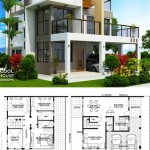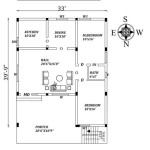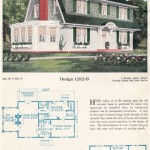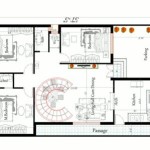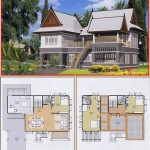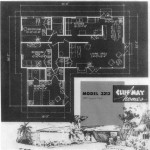House Plans With Inlaw Suite Kitchen: A Comprehensive Guide
The inclusion of an in-law suite, also known as an accessory dwelling unit (ADU) or secondary suite, has become an increasingly popular feature in modern home design. A key component of a functional in-law suite is often a dedicated kitchen. House plans incorporating in-law suites with kitchens offer numerous advantages, ranging from multigenerational living arrangements to potential rental income opportunities. This article explores the various aspects of house plans featuring in-law suites with kitchens, encompassing design considerations, legal and regulatory issues, cost factors, and potential benefits.
Understanding the Purpose and Benefits of an In-Law Suite with a Kitchen
The primary purpose of an in-law suite is to provide a degree of independent living space within a larger residential property. Traditionally intended for aging parents or relatives, the utility of in-law suites extends to a broader range of occupants, including adult children, caregivers, or renters. The inclusion of a kitchen elevates the suite from a simple living space to a more self-contained unit, enhancing privacy and autonomy for the occupant.
There are several significant benefits associated with incorporating an in-law suite kitchen into a house plan. Multigenerational families find in-law suites particularly appealing as they allow family members to live in close proximity while maintaining their own personal space and independence. This arrangement can facilitate shared childcare responsibilities, eldercare support, and a stronger family dynamic. Furthermore, an in-law suite with a kitchen can assist in managing household expenses by allowing family members to share costs related to utilities and property maintenance.
Beyond family use, an in-law suite with a kitchen can provide a valuable source of rental income. Local demand and regulations permitting, the suite can be leased to tenants, contributing to mortgage payments or other financial goals. This can make homeownership more affordable, and the income stream can also serve as a safety net in times of financial uncertainty. However, landlords must be aware of and comply with local tenancy laws. Another potential benefit arises during periods of significant life changes. An in-law suite can provide a transitional living space for individuals requiring temporary housing, such as adult children returning home from college or those experiencing a major life transition.
Design Considerations for House Plans with In-Law Suite Kitchens
Designing a house plan that includes an in-law suite with a kitchen requires careful consideration of several key factors. The overall layout of the house, the specific needs of the intended occupants, and the local building codes are all crucial elements that will influence the design process. Furthermore, the location of the suite within the house, its size, and the amenities included are all significant decisions to be made.
The location of the in-law suite within the house is a critical element in ensuring adequate privacy and independence for the occupants. Ground-level suites with separate entrances are often preferable, as they provide easy accessibility and minimize disruption to the main living areas. Alternatively, suites located above a garage or in a basement can also be effective. When considering accessibility, it's vital to account for potential mobility limitations of future occupants. Features such as wider doorways, barrier-free showers, and grab bars can enhance the usability of the suite for individuals with disabilities or those who may develop mobility issues in the future.
The size of the in-law suite kitchen should be proportionate to the overall size of the suite and the anticipated cooking needs of the occupants. A compact kitchen with essential appliances, such as a refrigerator, cooktop, microwave oven, and sink, may be sufficient for individuals who primarily prepare simple meals. However, families with more extensive cooking requirements may necessitate a larger kitchen with a full-sized oven, dishwasher, and more ample counter space. Ergonomics are also a key consideration in kitchen design. The layout of the kitchen should be optimized for functionality and ease of use, with appliances and work surfaces positioned to minimize unnecessary movement and strain. Attention should be paid to counter height, storage solutions, and lighting to create a comfortable and efficient cooking environment.
The selection of appropriate appliances and materials is also essential for creating a functional and attractive in-law suite kitchen. Energy-efficient appliances can help to reduce utility costs, while durable and low-maintenance materials can minimize upkeep and ensure long-term value. Countertops, flooring, and cabinetry should be chosen for their resistance to wear and tear, as well as their aesthetic appeal. The kitchen design should complement the overall style of the house while also reflecting the personal preferences of the occupant. Including design features that promote universal accessibility are beneficial, even if not needed initially.
Legal and Regulatory Considerations for In-Law Suites with Kitchens
Before embarking on a house plan incorporating an in-law suite with a kitchen, it is crucial to investigate local zoning regulations and building codes. These regulations can vary significantly from one jurisdiction to another and may restrict the size, location, and use of accessory dwelling units. Failure to comply with these regulations can result in fines, legal action, or even the forced removal of the suite.
Zoning regulations often specify minimum lot sizes, setback requirements, and parking requirements for properties with accessory dwelling units. Some jurisdictions may also restrict the types of occupants allowed in in-law suites, such as prohibiting short-term rentals or requiring that the suite only be occupied by family members. Building codes also typically mandate specific construction standards for in-law suites, including requirements for fire safety, electrical wiring, and plumbing. These codes are designed to ensure the safety and well-being of the occupants and to protect the structural integrity of the house.
Permitting processes vary depending on the jurisdiction. Generally, obtaining a building permit is necessary before beginning construction or renovation work on an in-law suite with a kitchen. The permitting process may involve submitting detailed architectural plans, obtaining inspections from building officials, and paying permit fees. It is essential to consult with local planning officials and building inspectors to understand the specific requirements in a given area. It is also advisable to seek legal advice to ensure that the proposed in-law suite complies with all applicable laws and regulations. Depending on the location, there may be rules around connecting utilities such as water and electricity to the main house, or whether a separate meter is required.
Cost Factors Associated with In-Law Suite Kitchens
The cost of building an in-law suite kitchen can vary widely depending on several factors, including the size of the kitchen, the quality of the materials and appliances used, and the complexity of the construction. In general, building a new in-law suite kitchen from scratch will be more expensive than renovating an existing space. The total cost can range from several thousand dollars for a very basic kitchen to tens of thousands of dollars for a more elaborate and high-end design.
The cost of materials and appliances typically constitutes a significant portion of the overall budget. Countertops, cabinetry, flooring, appliances, and fixtures can all vary widely in price depending on the quality and features. Labor costs are another significant factor to consider. Hiring experienced contractors and tradespeople can increase the overall cost but can also ensure that the work is done properly and to code. It would be useful to get quotes from many contractors before settling on a company.
Beyond the direct construction costs, there may be additional expenses associated with building an in-law suite kitchen. Permit fees, architectural and design fees, and utility connection fees can all add to the total cost. It is also important to factor in contingency funds to cover unexpected expenses or cost overruns. Planning for additional plumbing and electrical work can be crucial for a successful kitchen suite. To mitigate potential costs, it is advisable to obtain multiple bids from contractors, research material prices carefully, and prioritize essential features over luxury items. Value engineering, which involves identifying cost-saving measures without compromising quality or functionality, can also be a useful strategy. Lastly, exploring financing options, such as home equity loans or lines of credit, can help to make the project more affordable.

Southern Style House Plan With In Law Suite

Pin By Jessie Brooks On Mother In Law Head Quarters 2024 Apartment House Floor Plans

In Law Suite Plans Give Mom Space And Keep Yours The House Designers

House Plans With In Law Suites Houseplans Blog Com

Country House Plan With 4 Bedrooms And 3 5 Baths 4427

House Plans With In Law Suites Houseplans Blog Com

Adding An In Law Suite Designing Your Perfect House

Rising Trend For In Law Apartments Brick House Plans Bungalow Modular Home Floor

Modern Farmhouse Plan With In Law Suite 70607mk Architectural Designs House Plans

One Story With In Law Suite Plan 2286


